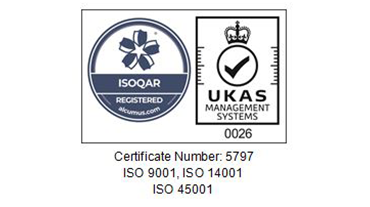By Penny Dew, Finance Director at Pexhurst
The construction industry is a key pillar of our economy, but its day-to-day financial management has not always been a smooth process. Behind the scenes, the industry has historically grappled with issues such as tax evasion and complex financial systems, with various reforms having been implemented to address these challenges over the years. By looking back at previous reforms, we can identify how the industry has gained greater efficiency through modern methods, and can benefit from these in the future.
For construction industry finance, a significant turning point was the introduction of the Construction Industry Scheme (CIS) in 1971, which was introduced primarily to prevent tax evasion. Despite best intentions, the scheme had its limitations, and it was not until the advent of digital technology that the industry saw seismic improvements in financial management. In my years working in the industry, I have witnessed the digital transformation of construction finance resulting in a more streamlined, efficient and transparent industry and hope to see the industry continue to develop in this way.
The Early Days of CIS
In the early days of the CIS, to receive payments in full without deduction of tax at source, subcontractors had to have a 714 Certificate as proof of their gross payment status. However, these paper-based processes were cumbersome and open to misuse. Later in 1999, subcontractors were categorised as CIS 4, CIS 5, and CIS 6, and were issued registration cards displaying their tax status. Subcontractors would have to show their cards in person to receive their payments which resulted in them driving to various places to present the card and enable them to receive payment. As well as being time consuming, this process was also prone to misuse and fraud.
Moreover, when annual returns were prepared, I recall in my early days having to sit and add up all the subcontractors’ vouchers to give the totals for the year to include on the return. With the size Pexhurst has grown to since then, the thought of counting vouchers is simply unimaginable!
The Digital Transformation of the Industry
Thankfully, the construction industry has come a long way since the days of CIS certificates, cards and vouchers. The catalyst for this transformation has been digitisation, which makes the historic paper-based processes unrecognisable today.
The industry saw a monumental milestone in April 2007, when the CIS underwent a significant overhaul and was integrated into the Real-Time Information (RTI) for PAYE system. This integration allowed for more efficient data reporting and management, with the key benefit of reducing the manual workload for businesses.
With the introduction of mandatory online CIS returns, the industry transitioned from paper-based reporting to digital platforms, saving time and reducing the risk of errors and improved data accuracy. Additionally, mandatory online verification streamlined the process of confirming subcontractors’ tax statuses, eliminating the need to show cards in person, which has reduced the administrative burden on companies and sole traders and freed up valuable time.
The Impact of Digitisation
The impact of digital transformation on the construction industry’s financial management has been profound. The digitisation of financial processes has simplified the way companies work, with the gradual replacement of manual paperwork and calculations by automated systems over the years resulting in far greater efficiency.
The move to digital platforms has improved transparency in financial transactions. Today, contractors and subcontractors can easily access and verify payment information, reducing the risk of disputes and misunderstandings. By integrating with RTI and implementing mandatory online verification, the CIS has become a more reliable tool in preventing tax evasion. Furthermore, digital records make it harder for individuals to manipulate their tax status.
The Future of Finance in Construction
The construction industry looks much different to how it did in 1971, but there is still room for improvement. In March 2021, the introduction of the Domestic Reverse Charge for VAT marked another pivotal change. As the industry continues to adapt to digital processes and new regulations, it will be interesting to see how these changes impact the construction landscape and the effectiveness of tax evasion prevention efforts by HMRC.
Looking back over the past 52 years, we can see that digitisation has revolutionised financial management in the construction industry, making it more efficient, transparent, and less susceptible to tax evasion. As technology continues to evolve, the industry will likely see further improvements in financial processes, enhancing its overall productivity and compliance with tax regulations. For all businesses in construction, embracing digital solutions is not just a matter of convenience; it’s a step towards a more sustainable, accountable and transparent construction sector.
Follow us on LinkedIn – https://www.linkedin.com/company/pexhurst-services-limited/









